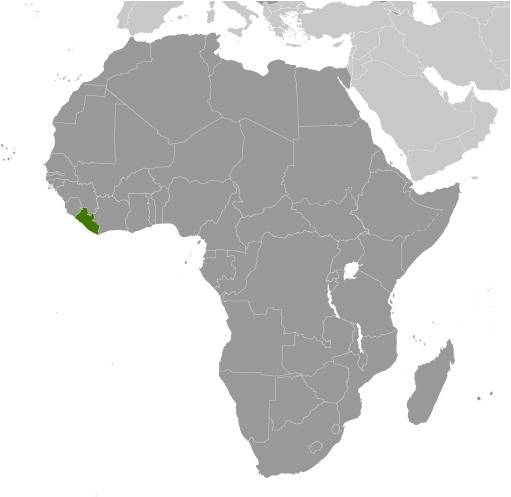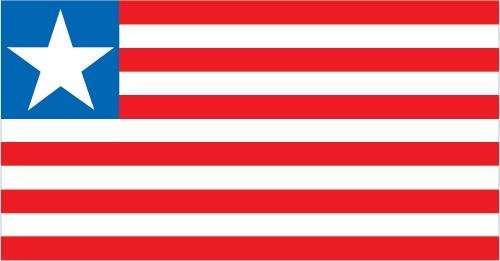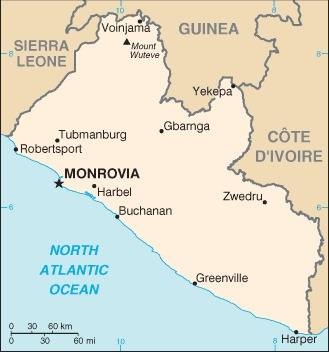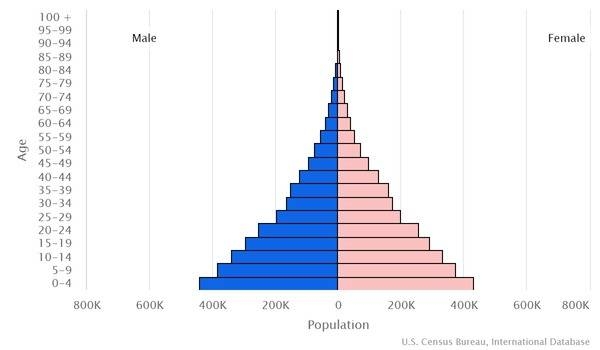Country Summary




Introduction
Background
Settlement of freed slaves from the US in what is today Liberia began in 1822. By 1847, the Americo-Liberians were able to establish a republic. A military coup in 1980 ushered in a decade of authoritarian rule followed by a civil war. A 2003 peace agreement ended the war and elections were held in 2005.
Geography
Area
total: 111,369 sq km
land: 96,320 sq km
water: 15,049 sq km
Climate
tropical; hot, humid; dry winters with hot days and cool to cold nights; wet, cloudy summers with frequent heavy showers
Natural resources
iron ore, timber, diamonds, gold, hydropower
People and Society
Population
5,358,483 (2022 est.)
Ethnic groups
Kpelle 20.3%, Bassa 13.4%, Grebo 10%, Gio 8%, Mano 7.9%, Kru 6%, Lorma 5.1%, Kissi 4.8%, Gola 4.4%, Krahn 4%, Vai 4%, Mandingo 3.2%, Gbandi 3%, Mende 1.3%, Sapo 1.3%, other Liberian 1.7%, other African 1.4%, non-African .1% (2008 est.)
Languages
English 20% (official), some 20 ethnic group languages few of which can be written or used in correspondence
Religions
Christian 85.6%, Muslim 12.2%, Traditional 0.6%, other 0.2%, none 1.5% (2008 est.)
Population growth rate
2.73% (2022 est.)
Government
Government type
presidential republic
Capital
name: Monrovia
Executive branch
chief of state: President George WEAH (since 22 January 2018); Vice President Jewel HOWARD-TAYLOR (since 22 January 2018); note - the president is both chief of state and head of government
head of government: President George WEAH (since 22 January 2018); Vice President Jewel HOWARD-TAYLOR (since 22 January 2018)
Legislative branch
description: bicameral National Assembly consists of:
The Liberian Senate (30 seats; members directly elected in 15 2-seat districts by simple majority vote to serve 9-year staggered terms; each district elects 1 senator and elects the second senator 3 years later, followed by a 6-year hiatus, after which the first Senate seat is up for election)
House of Representatives (73 seats; members directly elected in single-seat districts by simple majority vote to serve 6-year terms; eligible for a second term)
Economy
Economic overview
low-income West African economy; food scarcity, especially in rural areas; high poverty and inflation; bad recession prior to COVID-19 due to Ebola crisis; growing government debt; longest continuously operated rubber plantation; large informal economy
Real GDP (purchasing power parity)
$6.85 billion (2020 est.)
Real GDP per capita
$1,400 (2020 est.)
Agricultural products
cassava, sugar cane, oil palm fruit, rice, bananas, vegetables, plantains, rubber, taro, maize
Industries
mining (iron ore and gold), rubber processing, palm oil processing, diamonds
Exports
$550 million (2019 est.)
Exports - partners
Guyana 32%, Poland 10%, Switzerland 8%, Japan 7%, China 5% (2019)
Exports - commodities
ships, iron, gold, rubber, crude petroleum (2019)
Imports
$1.24 billion (2019 est.)
Imports - partners
China 41%, Japan 21%, South Korea 18% (2019)
Imports - commodities
ships, refined petroleum, iron structures, boat propellers, centrifuges (2019)
Exchange rates
Liberian dollars (LRD) per US dollar -
Page last updated: Friday, May 13, 2022
